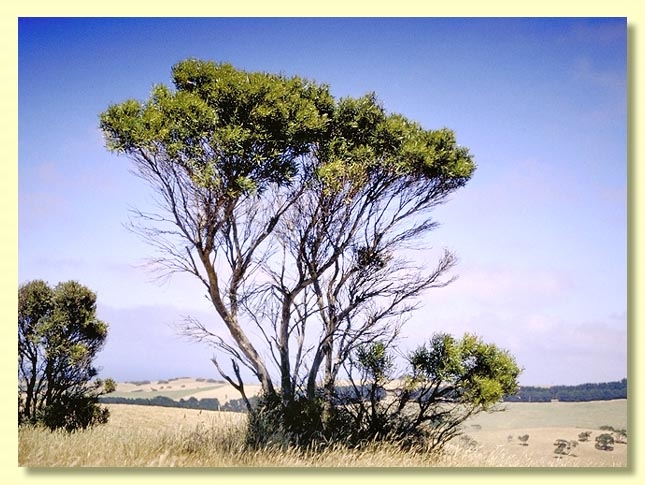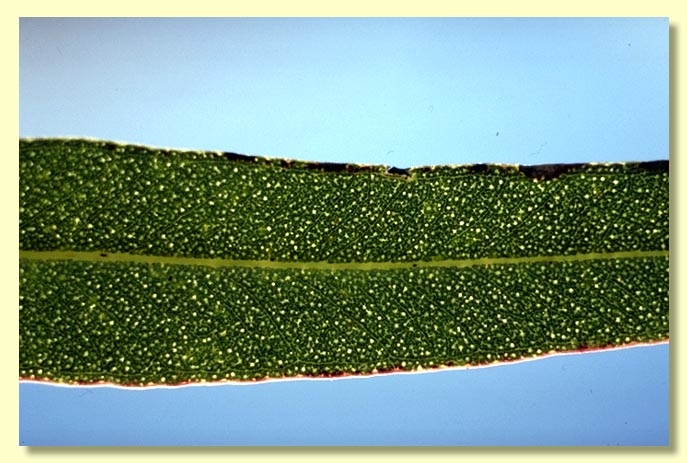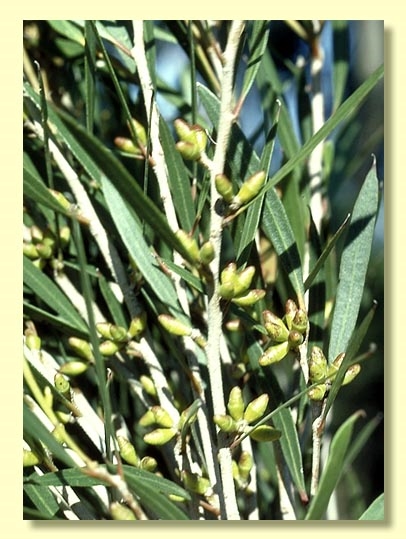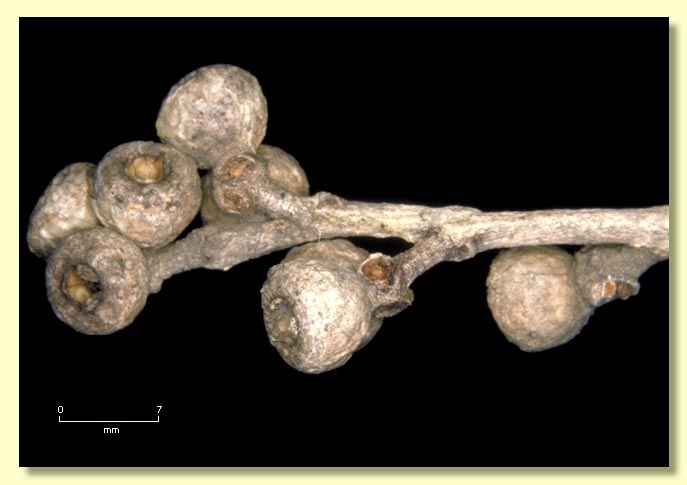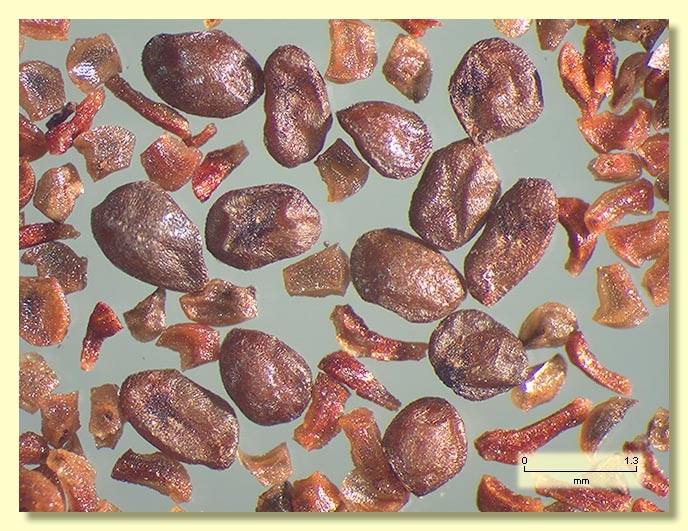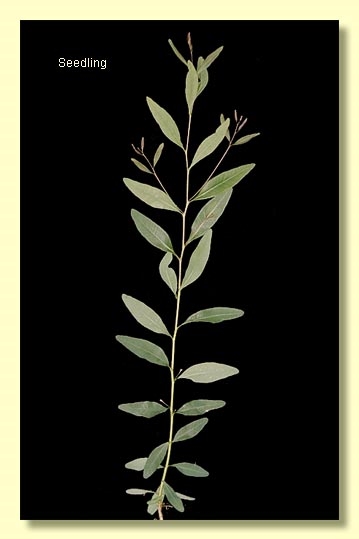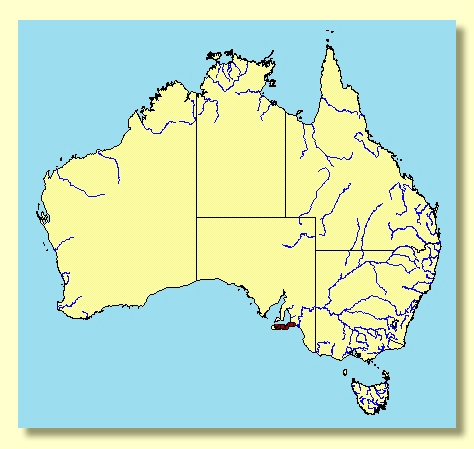Euclid - Online edition
Eucalyptus cneorifolia
Eucalyptus | Symphyomyrtus | Bisectae | Destitutae | Angustissimae | Fusiformes
T: New Holland [S.A.], 1821, collector unknown; holo: G.
Bark rough, narrowly fissured longitudinally, compacted, grey or brown-grey, upper stems and branches usually smooth, whitish to pale yellow-grey.
Juvenile growth (coppice or field seedlings to 50 cm): stems rounded, slightly warty; juvenile leaves opposite and sessile for ca 5 nodes then sub-opposite to alternate, subsessile, narrowly lanceolate to narrowly elliptic or linear, 3–6 cm long, 0.4–1 cm wide, held erect, base tapering, concolorous, green.
Adult leaves erect, sub-opposite to alternate, petiole 0–0.7 cm long; blade linear to lanceolate, 4.5–10 cm long, 0.5–1 cm wide, base tapering to petiole, concolorous, glossy, green, side-veins greater than 45° to midrib, often obscure, densely to very densely reticulate, intramarginal vein parallel to and just within margin, oil glands intersectional.
Inflorescence axillary unbranched, peduncles 0.3–0.8 cm long, buds 7, 9 or 11 per umbel, sessile or pedicellate (pedicels 0–0.1 cm long). Mature buds ovoid to fusiform, 0.6–1.1 cm long, 0.3–0.6 cm wide, green, scar present, operculum conical, stamens irregularly flexed, anthers scarcely versatile, basifixed, cuboid to reniform, dehiscing by oblique slits (non-confluent), style long, stigma blunt or tapered, locules 3 or 4, the placentae each with 4 vertical ovule rows. Flowers white.
Fruit sessile or pedicellate (pedicels 0–0.2 cm long), cup-shaped, hemispherical or truncate-globose, 0.4–0.7 cm long, 0.5–0.8 cm wide, disc raised-annular or disc level, valves 3 or 4, exserted or near rim level.
Seeds brown or grey, 1–2 mm long, ovoid or flattened-ovoid, sometimes dorsally furrowed, dorsal surface smooth or shallowly pitted, hilum ventral.
Cultivated seedlings (measured at ca node 10): cotyledons Y-shaped (bisected); stems rounded in cross-section; leaves opposite and sessile for 3 to 5 pairs then alternate, shortly petiolate, narrowly elliptic-lanceolate, 3–4(5) cm long, 0.8–1(1.5) cm wide, base tapering, apex rounded to pointed, dull, green.
Flowering has been recorded in January, November and December.
A mallee endemic to South Australia, mainly on Kangaroo Island with a small occurrence near Waitpinga on the Fleurieu Peninsula. It is not closely related to any species nearby and is recognised by the erect stems, compact rough bark, narrow erect leaves, and crowded fusiform buds and hemispherical fruit.
Eucalyptus cneorifolia belongs in Eucalyptus subgenus Symphyomyrtus section Bisectae subsection Destitutae because buds have two opercula, cotyledons are Y-shaped and branchlets lack oil glands in the pith. Within this subsection, E. cneorifolia is a somewhat isolated species forming the monotypic series Angustissimae subseries Fusiformes, its closest relatives probably being the smooth-barked, erect-leaved species of series Angustissimae subseries Oviformes, viz. E. angustissima, E. foliosa, E. quaerenda and E. misella of southern Western Australia, which have shorter buds and smooth bark.

